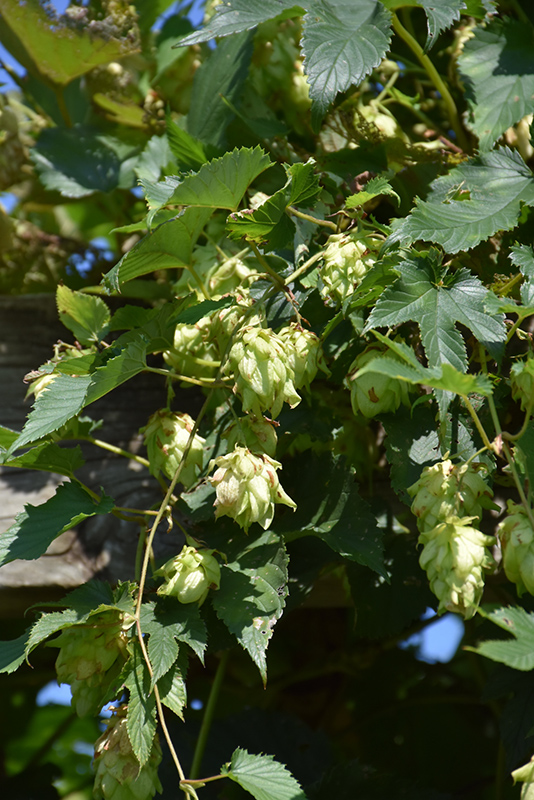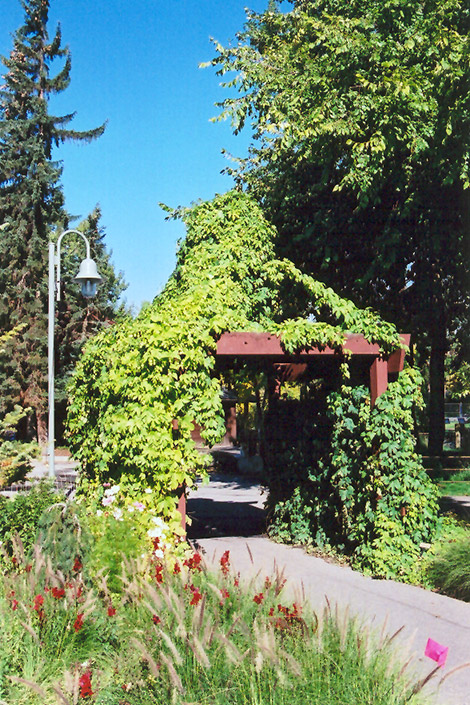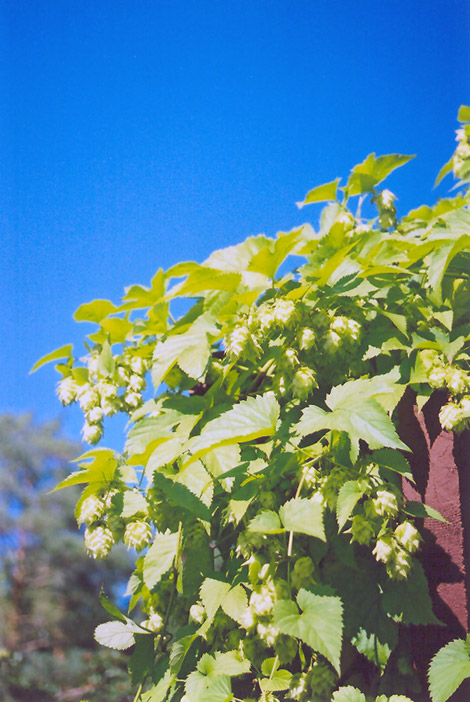Height: 30 feet
Spread: 3 feet
Sunlight:
![]()
Hardiness Zone: 3
Description:
A common and somewhat utilitarian vine, with cone-shaped clusters of yellowish fruits which are used in beer making; very tough and adaptable, good for screening or a quick cover, needs structural support, cut back to the ground each spring
Ornamental Features
Hops is primarily grown for its highly ornamental fruit. It produces abundant clusters of yellow hop-like fruit from mid summer to mid fall. It attractive tomentose lobed leaves remain green in colour throughout the season.
Landscape Attributes
Hops is a dense herbaceous perennial vine with a twining and trailing habit of growth. Its relatively coarse texture can be used to stand it apart from other garden plants with finer foliage.
This is a high maintenance plant that will require regular care and upkeep, and can be pruned at anytime. Gardeners should be aware of the following characteristic(s) that may warrant special consideration;
- Invasive
Hops is recommended for the following landscape applications;
- Hedges/Screening
- Naturalizing And Woodland Gardens
- Container Planting
Planting & Growing
Hops will grow to be about 30 feet tall at maturity, with a spread of 3 feet. As a climbing vine, it should either be planted near a fence, trellis or other landscape structure where it can be trained to grow upwards on it, or allowed to trail off a retaining wall or slope. It grows at a fast rate, and under ideal conditions can be expected to live for approximately 20 years. As an herbaceous perennial, this plant will usually die back to the crown each winter, and will regrow from the base each spring. Be careful not to disturb the crown in late winter when it may not be readily seen!
This plant should only be grown in full sunlight. It prefers to grow in average to moist conditions, and shouldn't be allowed to dry out. It is not particular as to soil type or pH, and is able to handle environmental salt. It is highly tolerant of urban pollution and will even thrive in inner city environments. This species is not originally from North America.
Hops is a fine choice for the garden, but it is also a good selection for planting in outdoor pots and containers. Because of its spreading habit of growth, it is ideally suited for use as a 'spiller' in the 'spiller-thriller-filler' container combination; plant it near the edges where it can spill gracefully over the pot. It is even sizeable enough that it can be grown alone in a suitable container. Note that when growing plants in outdoor containers and baskets, they may require more frequent waterings than they would in the yard or garden. Be aware that in our climate, most plants cannot be expected to survive the winter if left in containers outdoors, and this plant is no exception. Contact our experts for more information on how to protect it over the winter months.



